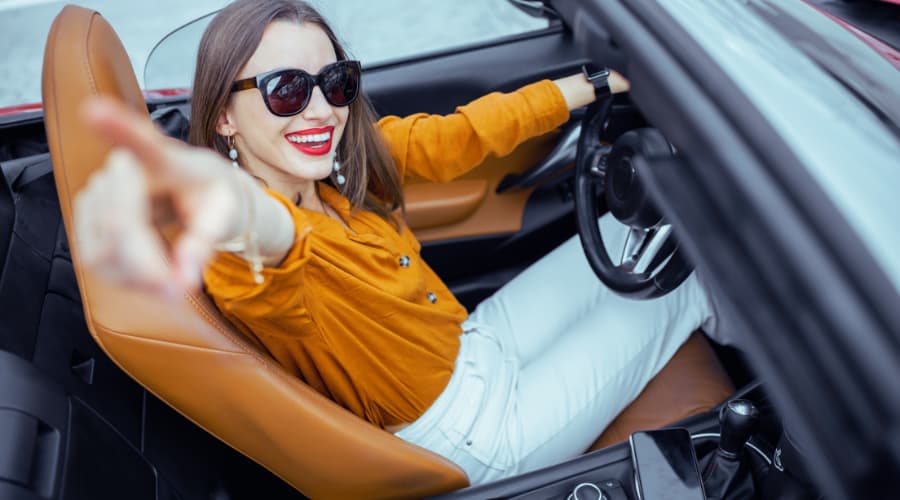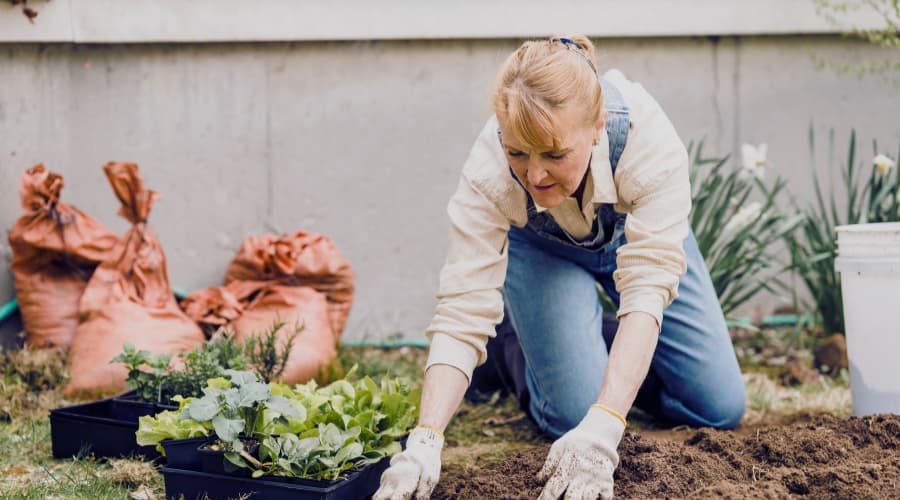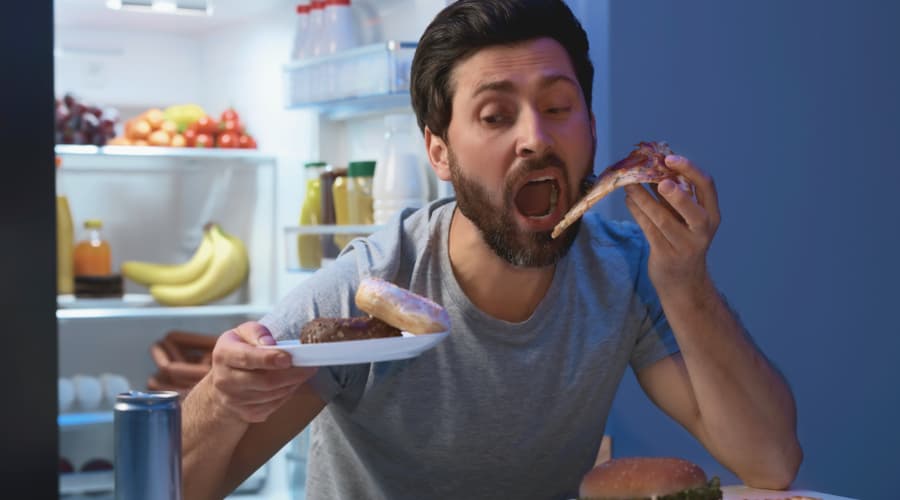Testosterone is a pivotal male hormone, integral to several physiological processes in men. It is crucial in maintaining muscle mass, and bone density, ensuring proper sexual function, and influencing mood and energy levels. Furthermore, testosterone has a direct and profound impact on body composition.
Changes in testosterone levels can significantly influence the distribution and volume of muscle and fat within the male body, highlighting the deep-rooted connection between this hormone and the overall physical makeup of men.
Testosterone
Testosterone Production and Regulation
Testosterone is primarily produced in the Leydig cells of the testes in response to signals from the pituitary gland. This production is a part of the hypothalamic-pituitary-gonadal axis, a critical system that ensures the body maintains appropriate levels of sex hormones. The hypothalamus releases gonadotropin-releasing hormone (GnRH), which signals the pituitary gland to release luteinising hormone (LH). LH, in turn, prompts the testes to produce testosterone. The body maintains testosterone levels within a narrow range through a feedback mechanism; when levels are high, the hypothalamus reduces GnRH secretion to balance things out.
Testosterone in Muscle Growth and Fat Distribution
Testosterone has a direct influence on muscle growth by accelerating muscle protein synthesis. This process results in the building of new proteins and subsequently leads to increased muscle mass. Testosterone aids in the differentiation of mesenchymal stem cells into the myogenic lineage, which later forms muscle fibres. Furthermore, testosterone increases growth hormone levels, another critical player in muscle development.
On the other hand, testosterone plays a role in fat distribution and metabolism. Men with lower testosterone levels tend to have an increase in body fat, especially in the abdominal region. Testosterone inhibits the creation of new fat cells and encourages the burning of lipids for energy. Moreover, it impacts where men store fat; typically, men have lesser fat in the thighs and buttocks than women, partly influenced by testosterone. It’s also essential to note that visceral fat, the fat surrounding internal organs, negatively affects testosterone, meaning increased visceral fat can further lower testosterone levels, setting off a cyclic pattern.
Impact of Testosterone on Muscle Mass
The Anabolic Effect of Testosterone
Testosterone is well-recognised for its anabolic effects, which primarily refer to the building and repair of tissues. In the context of muscle, testosterone enhances the body’s ability to synthesise proteins, which are the primary building blocks of muscle tissue. This protein synthesis leads to an increase in muscle fibre size and muscle mass. Additionally, testosterone increases the number of satellite cells, precursors to muscle cells, aiding in muscle repair and growth. Furthermore, the hormone also inhibits the effects of cortisol, a catabolic hormone. By suppressing cortisol, testosterone ensures that the rate of muscle breakdown does not surpass the rate of muscle building. The result of these processes is enhanced muscle strength and size.
Testosterone’s Influence on Athletic Performance and Recovery
Testosterone’s role in athletic performance is multifaceted. It enhances muscle strength and size, which can benefit power-based sports. Still, it also aids in increasing bone density, thereby offering better skeletal strength and reducing the risk of injury.
Moreover, testosterone plays a role in red blood cell production. With a higher red blood cell count, athletes may experience improved oxygen transportation to muscles, leading to better aerobic performance and endurance.
In terms of recovery, testosterone is instrumental. Post-exercise, muscle fibres undergo wear and tear and repair and grow stronger during recovery. Testosterone accelerates this recovery process by increasing muscle protein synthesis rates, facilitating faster muscle repair. Additionally, several studies have indicated that optimal testosterone levels can reduce muscle soreness, enhancing an athlete’s ability to train frequently and consistently.
Overall, while testosterone does offer undeniable advantages for athletes, it’s crucial to underscore the importance of natural, physiological levels of the hormone. Abusing testosterone or other anabolic steroids for performance enhancement can have detrimental health effects.
Testosterone and Fat Distribution
Low Testosterone and Increased Adipose Tissue
Several research studies have consistently connected decreased testosterone levels and increased body fat percentages. In particular, visceral fat – stored in the abdominal area and around internal organs – shows a prominent increase with declining testosterone levels. One potential reason for this correlation is that testosterone aids in maintaining and growing muscle mass, and a decrease in muscle tissue can lower the basal metabolic rate. Consequently, fewer calories are burned at rest, potentially contributing to weight gain.
Furthermore, observational studies have shown that men with low testosterone often exhibit a metabolic syndrome’s clinical features, which include central obesity. A reciprocal relationship is also at play: increased adipose tissue, especially visceral fat, can lead to systemic inflammation and insulin resistance. This environment can further reduce testosterone production, creating a vicious cycle of increasing body fat and decreasing testosterone levels.
Role of Testosterone in Metabolism and Lipolysis
Testosterone has a direct impact on the body’s metabolic processes. It helps to increase the basal metabolic rate, which is how our body burns calories while at rest. An enhanced metabolic rate from a healthy testosterone level can lead to a more efficient calorie burn and potentially contribute to weight management.
On the front of fat breakdown, testosterone plays a pivotal role in lipolysis – the process of breaking down stored fat to be used as energy. Testosterone promotes lipolysis by activating enzymes responsible for fat breakdown and inhibiting the uptake of lipids into adipocytes (fat cells). Moreover, testosterone reduces the differentiation of preadipocytes into mature fat cells, thereby impacting fat storage capacity.
Another vital aspect is testosterone’s influence on insulin sensitivity. Optimal testosterone levels can improve insulin sensitivity, ensuring cells utilise glucose effectively for energy rather than being stored as fat.
Testosterone Replacement Therapy and Body Composition Changes
Testosterone Replacement Therapy (TRT) has been extensively researched concerning its effects on muscle mass and strength. Clinical trials have confirmed its efficacy in promoting lean muscle growth.
- Studies on hypogonadal men (men with low testosterone) who underwent TRT observed a consistent increase in lean body mass. This increase often correlates with the duration and dosage of therapy, emphasising the dose-dependent nature of TRT’s effects on muscle mass.
- With increased muscle mass, men undergoing TRT frequently report enhanced muscle strength. Clinical measures, such as grip strength and resistance exercise performance, have significantly improved post-TRT. Additionally, the functional benefits of this enhanced strength, such as improved mobility and reduced risk of falls in older men, cannot be understated.
- On a cellular level, TRT has been shown to stimulate muscle protein synthesis. This biological mechanism underpins the increase in muscle mass and strength, marking a direct effect of testosterone on muscle cells.
TRT and Fat Reduction
The scientific community has closely examined the impact of TRT on body fat, given the well-documented association between low testosterone levels and heightened body fat.
Significant Fat Mass Reduction:
One of the notable outcomes of several TRT studies is the reduction in fat mass, particularly in the abdominal region. As previously discussed, visceral fat is closely associated with numerous metabolic and cardiovascular complications. Therefore, TRT’s ability to reduce this specific fat type offers profound health implications.
Improved Metabolic Parameters:
Beyond mere fat reduction, TRT has shown promise in enhancing metabolic parameters. Patients on TRT often display improved insulin sensitivity, reduced blood glucose levels, and favourable changes in lipid profiles. These metabolic improvements can further aid in the reduction of adipose tissue.
Mechanisms at Play:
TRT facilitates fat reduction through several mechanisms, including increased metabolic rate, enhanced lipolysis, and inhibiting lipid uptake into fat cells. By modulating these pathways, TRT can play a pivotal role in reshaping body composition in favour of reduced fat storage.
Testosterone, Ageing, and Body Composition
Testosterone levels undergo notable changes as men age. With the natural decline of this hormone, there are consequential effects on body composition, notably in muscle mass, fat distribution, and the general physiological structure. A distinct differentiation is observed when examining the physical changes in men experiencing a regular age-related testosterone decrease compared to those diagnosed with clinical hypogonadism.
| Age Range | Average Testosterone Level (ng/dL) |
|---|---|
| 20-30 | 600-675 |
| 30-40 | 575-650 |
| 40-50 | 550-625 |
| 50-60 | 525-600 |
| 60-70 | 450-550 |
| 70+ | 400-500 |
A significant concern related to ageing is sarcopenia, a condition characterised by the loss of muscle tissue. Various factors, including diminished testosterone levels, influence this muscle degradation. Current research has investigated the potential of Testosterone Replacement Therapy (TRT) as a countermeasure against such muscle loss. Preliminary findings indicate that TRT may offer benefits in combating age-related muscle reduction. However, when considering TRT as a potential treatment for sarcopenia, assessing its potential benefits and associated risks is vital.
Testosterone, Nutrition, and Exercise
Dietary habits are pivotal in influencing testosterone levels and overall body composition. Various nutrients, including specific vitamins and minerals, have been scientifically associated with supporting optimal testosterone production. Maintaining a balanced diet that incorporates these essential nutrients can serve as a foundational approach to ensuring healthy testosterone levels. Furthermore, certain dietary choices can directly affect body composition, complementing or countering the benefits achieved through optimal testosterone levels.
Parallelly, exercise stands as another significant modulator of testosterone and body composition. Physical activity has been shown to bolster testosterone production, especially resistance training and high-intensity interval workouts. A tailored exercise regimen for individuals undergoing Testosterone Replacement Therapy (TRT) can magnify the positive effects on muscle growth and fat distribution. Integrating consistent and appropriate exercise routines can support the hormonal benefits of TRT and contribute to a more favourable body composition over time.
Related Articles
- Testosterone Replacement Therapy and Cardiovascular Health
- Lifestyle Changes to Boost Testosterone Levels Naturally
- Understanding the Signs and Symptoms of Low Testosterone Every Man Should Know About
- Understanding Testosterone Deficiency and the Role of Hormone Replacement
- The Potential of Testosterone Replacement Therapy: Benefits, Risks, and Myths




























